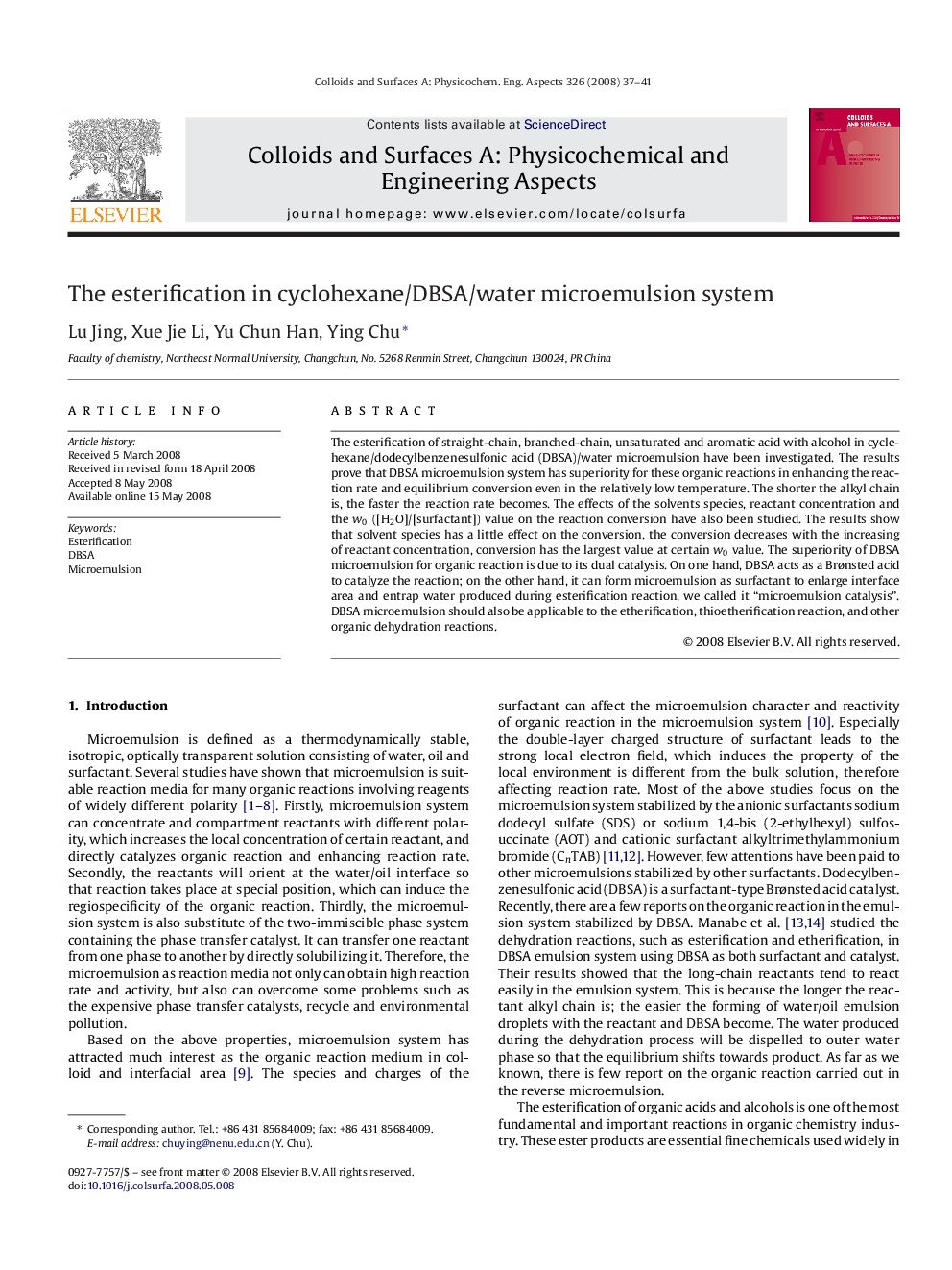| Article ID | Journal | Published Year | Pages | File Type |
|---|---|---|---|---|
| 596370 | Colloids and Surfaces A: Physicochemical and Engineering Aspects | 2008 | 5 Pages |
Abstract
The esterification of straight-chain, branched-chain, unsaturated and aromatic acid with alcohol in cyclehexane/dodecylbenzenesulfonic acid (DBSA)/water microemulsion have been investigated. The results prove that DBSA microemulsion system has superiority for these organic reactions in enhancing the reaction rate and equilibrium conversion even in the relatively low temperature. The shorter the alkyl chain is, the faster the reaction rate becomes. The effects of the solvents species, reactant concentration and the w0 ([H2O]/[surfactant]) value on the reaction conversion have also been studied. The results show that solvent species has a little effect on the conversion, the conversion decreases with the increasing of reactant concentration, conversion has the largest value at certain w0 value. The superiority of DBSA microemulsion for organic reaction is due to its dual catalysis. On one hand, DBSA acts as a Brønsted acid to catalyze the reaction; on the other hand, it can form microemulsion as surfactant to enlarge interface area and entrap water produced during esterification reaction, we called it “microemulsion catalysis”. DBSA microemulsion should also be applicable to the etherification, thioetherification reaction, and other organic dehydration reactions.
Keywords
Related Topics
Physical Sciences and Engineering
Chemical Engineering
Colloid and Surface Chemistry
Authors
Lu Jing, Xue Jie Li, Yu Chun Han, Ying Chu,
